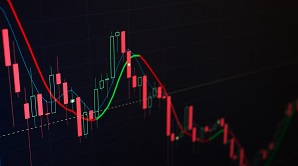Jan. 08, 2019
Speaker : Anand Venkataraman , Head of Product Management

Ever since the onset of the financial crisis in 2008, volatility has become a critical aspect for investors to consider, measure and position in their portfolios. During the peak of the financial crisis, realized volatilities of asset prices soared as well as volatilities implied by option prices and measured by volatility indices such as the EURO STOXX 50® Volatility (VSTOXX®) Index and VDAX® reached unprecedented levels, reflecting the increasing cost of buying downside protection in the form of options during the market turmoil. Volatilities, both implied and realized, have subsided since the height of the financial crisis and in fact reached historical lows due to the mostly unidirectional move in the stock markets over the decade – with intermittent spikes owing to the taper tantrum, the US Federal Reserve raising the interest rate for the first time in almost a decade, or the more recent tiff between the US and China over trade tariffs.
Volatility has long ceased to be a mere measure for the level of uncertainty prevailing in financial markets. In fact, some experts argue that it has become an asset class for investors looking to diversify their portfolio strategy. Exposure to volatility is available in the form of a wide range of investment opportunities for institutional investors as listed and OTC derivatives, in particular on the EURO STOXX 50®, DAX®, S&P500, FTSE 100 and Nikkei. Over the years, volatility as an investable asset class has evolved from being a niche strategy for institutional investors and is now accessible to retail investors in the form of certificates and structured products, though the complexity of investing in the asset class restricts its widespread availability to and use by retail investors.
Participants in the volatility markets typically intend to obtain exposure to volatility for the purposes of reducing risk (downside protection or regular income generation), with some participants aiming to also enhance returns (speculation, arbitrage/relative value). Downside protection is achieved typically either by buying options – typically put options – as an insurance for existing investor portfolios, selling call options to earn premiums that partially cushion the downside, or by employing a strategy such as a collar that combines call and put options. Participants looking to enhance returns typically speculate about the direction of volatility by taking an appropriate directional position in volatility (using volatility futures, for example), or employ relative value strategies – such as volatility arbitrage – to benefit from mispricing between forecast future volatility and implied volatility.
In this paper, we introduce the topic of volatility as an investable asset class, focusing mainly on equity volatility. We attempt to familiarize readers with the various indices offered by STOXX, describe in brief the objective and construction methodology of each index, and even discuss a sample of other strategies that may be constructed using some of the existing indices. We analyze the performance of each index and attempt to explain each index’s performance as well as any potential risks to be aware of.
Please fill the form below to attend :






